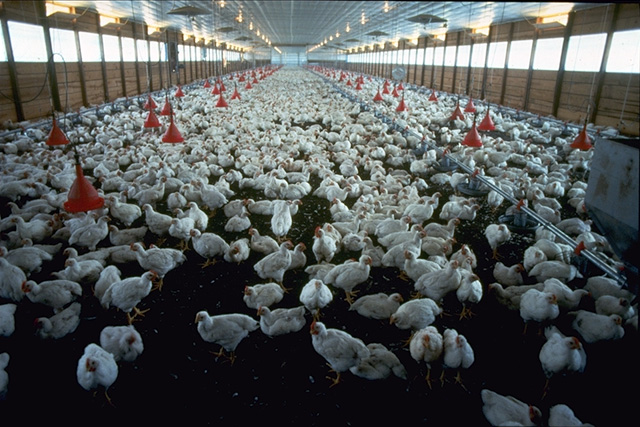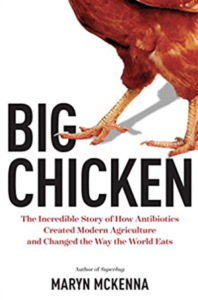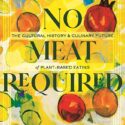Books
Real Food Reads Book Club
Big Chicken: The Incredible Story of How Antibiotics Created Modern Agriculture and Changed the Way the World Eats
Is there any food more commonplace on the modern American dinner table than chicken? Consumed more than any other meat in the United States, it graces everything from the highly processed chicken nugget to the most sophisticated fine dining dishes. But how did chicken become so ubiquitous in the American diet? And how has its rise to mass consumption status changed the way it is produced and its impact on the environment, animal welfare, and your health?
How often do you really stop to think about chicken?
In this month’s Real Food Reads feature, award-winning journalist and critically-acclaimed author (Superbug; Beating Back the Devil) Maryn McKenna brings us the eye-opening story of this frequently overlooked food. In Big Chicken: The Incredible Story of How Antibiotics Created Modern Agriculture and Changed the Way the World Eats, McKenna chronicles how the use of antibiotics in industrial farming turned chicken into an industrial commodity—and a threat to public health—as she shows us the way to safer, healthier eating for ourselves and our children.
Praise for Big Chicken
“A must-read for anyone who cares about the quality of food and the welfare of animals.”
– Mark Bittman, author of How To Cook Everything
“A modern Upton Sinclair, Maryn McKenna explains how our food is actually produced today. Big Chicken is highly readable, shocking, and opens our eyes to the risks we have been incurring. A most important book!”
– Martin Blaser, MD, author of Missing Microbes
“If you think raising farm animals on antibiotics is nothing to worry about, Big Chicken will change your mind in a hurry. Maryn McKenna’s account of the profit-driven politics that allowed widespread antibiotic resistance should be required reading for anyone who cares about food and health.”
– Marion Nestle, author of Food Politics
 About the Author
About the Author
Maryn McKenna is an independent journalist and author who specializes in public health, global health and food policy. She is a Senior Fellow at the Schuster Institute for Investigative Journalism at Brandeis University and the author of the new book Big Chicken: The Incredible Story of How Antibiotics Created Modern Agriculture and Changed the Way the World Eats (National Geographic Books, Sept. 2017), named a Best Book of 2017 by Amazon, Science News, Smithsonian Magazine, Civil Eats, the Atlanta Journal-Constitution and the Toronto Globe and Mail, as well as an Essential Science Read by Wired. Her 2015 TED Talk, “What do we do when antibiotics don’t work any more?“, has been viewed more than 1.5 million times and translated into 32 languages. Read more at https://marynmckenna.com/ and follow Maryn on Twitter: @marynmck.
Real Food Reads Recipes
 Our resident recipe guru Jessica Jones weighs in with some tasty treats that’ll take your book club to the next level. Check out Jessica’s blog and podcast, Food Heaven Made Easy, an online resource for delicious and nutritious plant-based living.
Our resident recipe guru Jessica Jones weighs in with some tasty treats that’ll take your book club to the next level. Check out Jessica’s blog and podcast, Food Heaven Made Easy, an online resource for delicious and nutritious plant-based living.
Hearty Chipotle Spinach Frittata
Serves 3
Maryn’s Approximate French Market Chicken
Time: 15 minutes prep, about an hour roasting, 5-10 minutes rest
Ingredients & Equipment
A whole organic chicken, 3-4 lbs
A lemon
Mixed dried herbs of your choice
Fresh-ground pepper
Kosher salt
Olive oil
Kitchen shears that can cut through bone
Paper towels
A half-sheet pan, 18×13, with rims on all four sides (larger than a jelly roll pan, which are
usually 9×12, and sturdier than a cookie sheet, which sometimes has a rim on only one
side)
A chef’s thermometer
A heavy chef’s knife
Instructions
- Take the chicken out of the refrigerator at least a half hour before you plan to cook it.
- Stir together in a little dish:1 teaspoon each of several dried herbs; I usually use thyme and marjoram, sometimes tarragon or oregano. (If you use rosemary, stop at 1/2t); 1⁄2 teaspoon of freshly ground black pepper (for my Peugeot grinder, this is 30 turns); 1 tablespoon of olive oil.
- Let that sit while you prep the chicken.
- Preheat the oven to 400 F; use the convection option if you have it.
Spatchcock the chicken:
- Open the wrapping and wipe the skin with wet paper towels to remove any old blood or
package fluid (Food microbiologists say you shouldn’t rinse chicken, because the spray
may splash bacteria onto your kitchen counters. Your call).
- Fold 2-3 paper towels over at their seams to make a square pad that will keep the bird
from slipping. Put the chicken front-side down on this, with the neck opening toward
you.
- Using the kitchen shears (do not do this with a knife, it may slip), start at one side of the
top of the backbone, and snip down to the tail. You will be cutting first through the ribs,
which are slender, and then through the pelvis, which may take some effort.
- Do the same thing on the other side of the backbone and lift it out when it is free.
- You are now looking down at the inside of the breastbone, which will be shaped like an
upside-down Y. Look for the places where the arms of the Y branch; maneuver the point of the shears under them and snip to break the arm of the Y (This will help you flatten the chicken).
- Turn the chicken over, gently spreading out the cut sides of the rib cage, and press down
on the center of the outside of the breastbone until you feel it crack and the two sides of
the breasts can lay flat.
- Transfer the chicken to the half-sheet. Tuck the wings up behind the shoulders and turn
the leg joints in toward each other.
Season the chicken:
- Cut the lemon in half crossways and then cut each piece vertically, to give you four
quarters. Put two of them away. Squeeze the two remaining lemon quarters over the
chicken and then rub the juice into the skin with the flesh side of the quarter.
- Take the herbs and oil that have been steeping, which will be pretty sludgy, and spoon
them gently all over the bird. Rub it in with your hands.
- Sprinkle the chicken with kosher salt. How much to use depends on which type of
kosher salt you have (Diamond salt has a smaller crystal than Morton’s, so a spoonful contains more salt) but you should probably use more than you think, at least 1⁄4 t and maybe 1⁄2 t.
Roast the chicken:
- Slide the chicken into the middle of the oven and leave it alone for a good long while, 45
minutes to an hour. Let it get really brown. The flesh is done at 165 degrees on a chef’s
thermometer.
- Take the chicken out and let it rest on the pan for 5-10 minutes. Transfer it to a cutting
board.
- Using a heavy knife, slice between the thighs and breasts, and then between the
drumsticks and thighs. Divide the breasts down the middle and then, French style, cut
each side crossways to make four pieces, two with wings attached.
If you want it to be the closest possible approximation to French market chicken, take it
off the pan, wrap it securely in foil, slide it into a brown paper bag, and walk around the block with it. By the time you get home it will be the perfect temperature.
Header photo by Joe Valbuena/USDA via Wikimedia

 About the Author
About the Author Our resident recipe guru Jessica Jones weighs in with some tasty treats that’ll take your book club to the next level. Check out Jessica’s blog and podcast,
Our resident recipe guru Jessica Jones weighs in with some tasty treats that’ll take your book club to the next level. Check out Jessica’s blog and podcast,  Start by blending the tomato sauce + chipotle peppers. Set aside
Start by blending the tomato sauce + chipotle peppers. Set aside


